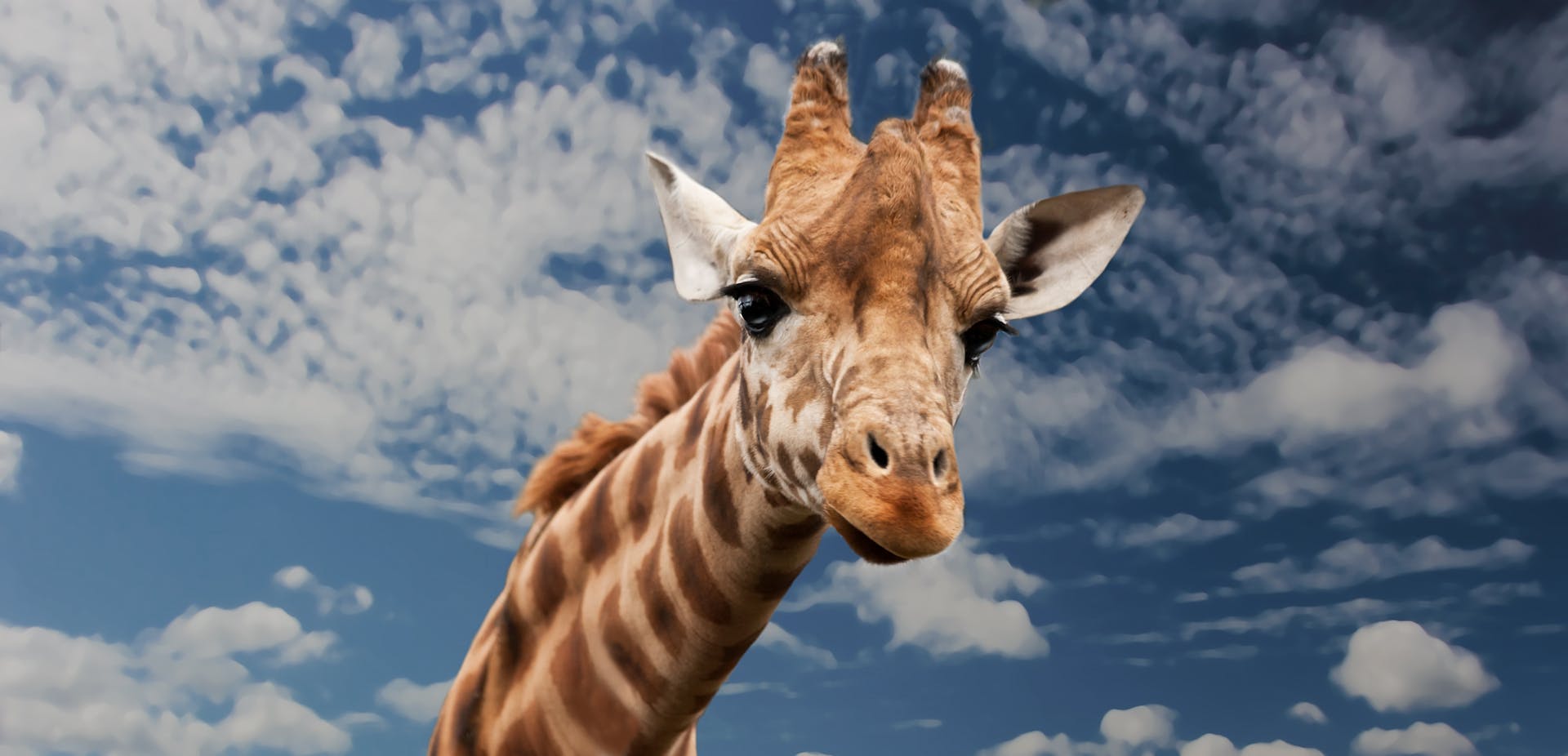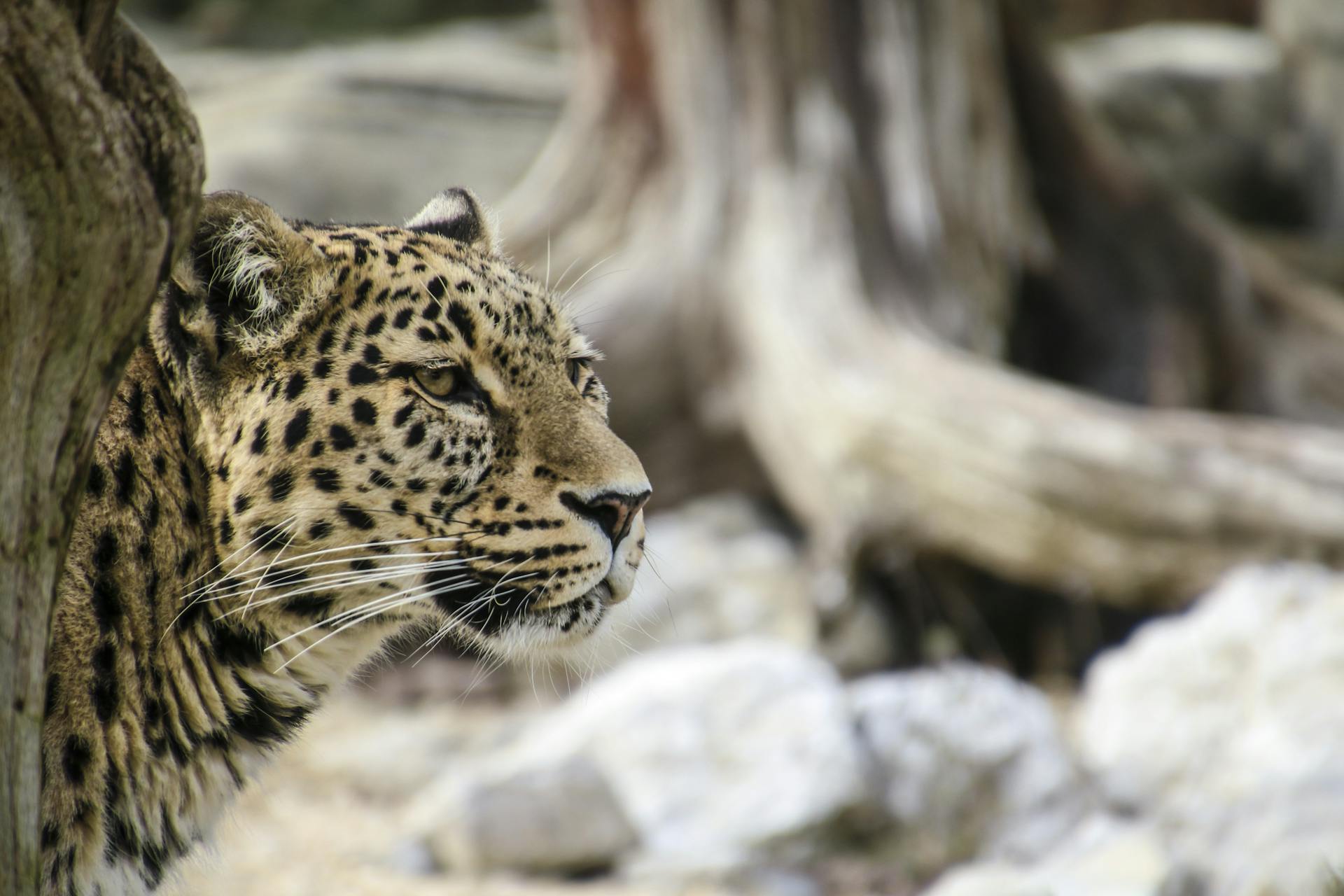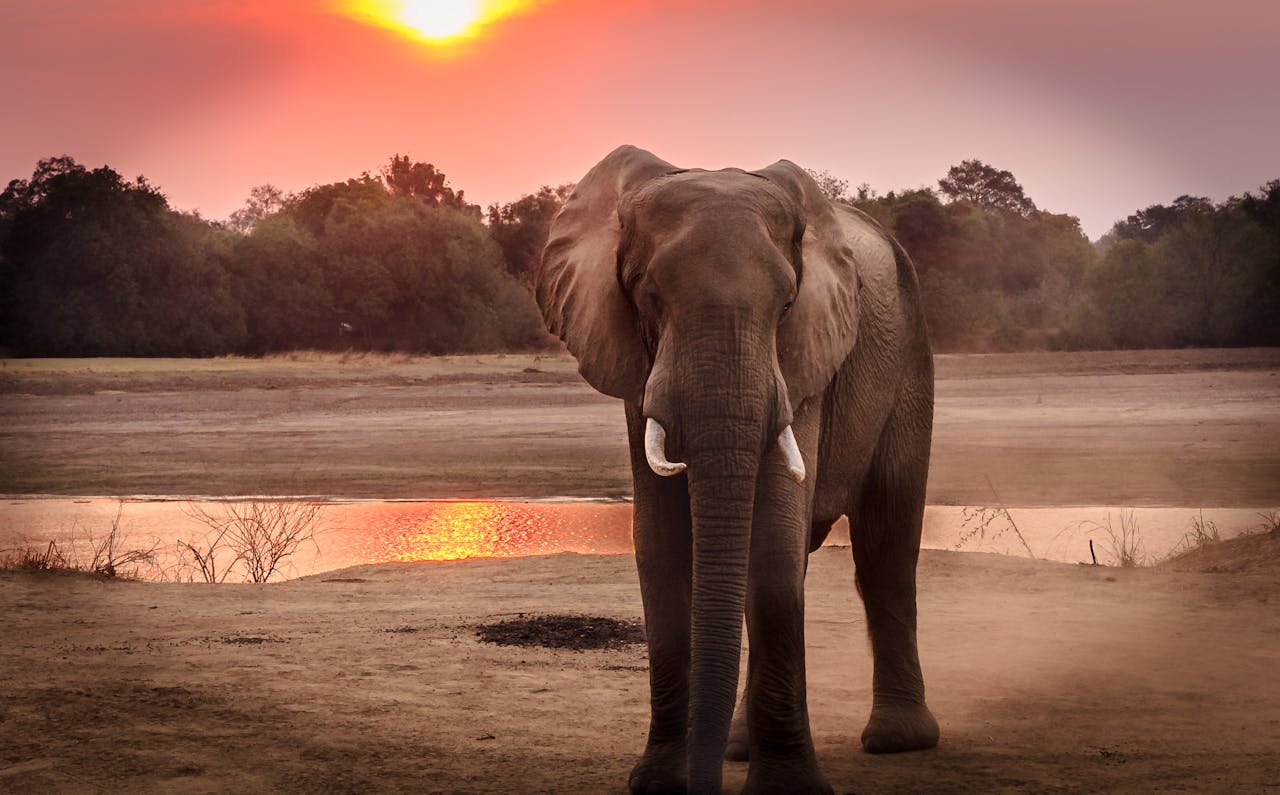In the vast expanse of the African savannah, where the golden grasslands stretch endlessly beneath the blazing sun, one creature stands tall—quite literally—above the rest. The giraffe, with its towering neck and elegant stride, is not only the tallest animal on Earth but also one of the most captivating. These gentle giants have long fascinated humans, not just for their extraordinary height but for their unique blend of strength and grace, making them icons of the wild.
Giraffes are more than just a marvel of nature’s design; they play a crucial role in the ecosystems they inhabit, shaping the landscape with their feeding habits and providing vital connections in the web of life. Each giraffe is a living mosaic, its coat patterned with a distinctive array of patches that serve as both camouflage and identification, much like a fingerprint. Yet, despite their imposing stature and cultural significance, giraffes face growing threats in the wild, making their conservation more important than ever.
In this article, we will delve into the world of giraffes, exploring their physical characteristics, social behaviours, and the crucial role they play in their environment. We’ll also discuss the challenges they face, and the efforts being made to ensure that future generations will continue to witness these majestic creatures roaming the African plains. Join us as we uncover the story of the giraffe—the gentle giant of the savannah.
Physical Characteristics
A. Height and Neck Structure
One of the most remarkable features of the giraffe is its height, with adult males reaching up to 18 feet (5.5 meters) tall. This towering stature is primarily due to the giraffe’s elongated neck, which alone can measure up to 6 feet (1.8 meters) in length. Despite its extraordinary length, a giraffe’s neck contains the same number of vertebrae as most other mammals, including humans—just seven. However, each vertebra is much larger and elongated, allowing for the neck’s impressive reach. This adaptation enables giraffes to access foliage high in the trees, particularly in the acacia species, giving them a significant advantage over other herbivores.
B. Coat Patterns
The giraffe’s coat is another striking feature, covered in a pattern of irregular patches that vary in shape and color from light tan to dark brown. These patterns are not just for show; they serve as vital camouflage in the dappled light of the savannah, helping giraffes blend into their environment and avoid predators. Each giraffe has a unique coat pattern, much like a human fingerprint, which can be used to identify individual animals. This natural camouflage is crucial for their survival, especially in areas where the landscape provides limited cover.
Behavior and Social Structure
A. Herd Dynamics
Giraffes are generally social animals, living in loose, open herds that can vary greatly in size. These herds are typically composed of females and their young, while males often lead a more solitary life or form small bachelor groups. The social structure within these herds is fluid, with individuals coming and going as they please. Female giraffes tend to form stronger bonds, particularly when caring for their calves, while males interact primarily during the mating season or when engaging in dominance displays.
B. Male “Necking” Battles
Among male giraffes, “necking” battles are a common sight. These are not violent encounters but rather a form of ritualized combat where males swing their necks and heads at each other, using their horns, called ossicones, as weapons. The intensity of these battles can vary, but they are primarily a means of establishing dominance within the group. The winner of these contests often gains greater access to mates, reinforcing the social hierarchy among males.
C. Movement and Speed
Despite their size, giraffes are surprisingly agile and graceful. Their long legs allow them to cover vast distances with minimal effort, and they can reach speeds of up to 35 miles per hour (56 kilometers per hour) when necessary. This ability to move quickly is vital for escaping predators, though giraffes usually rely on their height and keen eyesight to spot danger from afar. Their stride is so long that they can cover more ground in a single step than most animals can in several, making them efficient travelers in search of food.
Diet and Feeding Habits
A. Primary Diet
Giraffes are herbivores, with a diet primarily consisting of leaves, flowers, and fruits from a variety of trees and shrubs. Their favorite food source is the acacia tree, whose high branches and thorny leaves pose little challenge to these tall creatures. Giraffes use their long necks and prehensile tongues—reaching up to 18 inches (45 cm)—to grasp and strip leaves from even the most inaccessible branches.
B. Feeding Adaptations
The giraffe’s feeding habits are a marvel of adaptation. Their tough lips and specialized saliva allow them to consume thorny plants like acacias without injury, making them one of the few animals that can exploit this food source fully. Their height gives them access to a feeding niche that few other herbivores can reach, reducing competition for food in their habitat.
C. Seasonal Feeding Patterns
During the dry season, when food becomes scarce, giraffes demonstrate remarkable resilience. They can survive on a reduced diet by feeding on a variety of plant species, and they can go for weeks without drinking water, relying on the moisture content in leaves. On average, a giraffe consumes about 75 pounds (34 kilograms) of foliage each day, ensuring it gets the nutrients necessary to sustain its massive body.
Reproduction and Lifespan
A. Birth and Early Life
The birth of a giraffe calf is a dramatic event. Female giraffes give birth standing up, and the newborn calf, which is about 6 feet (1.8 meters) tall, must endure a drop of several feet to the ground as its first experience. Despite this rough start, giraffe calves are usually able to stand and take their first steps within hours of birth. This early mobility is crucial for their survival, as it allows them to stay close to their mothers and avoid predators.
B. Maternal Care
Giraffe mothers are highly protective of their young, keeping them close and often forming nursery groups with other females and calves for added safety. The calf remains dependent on its mother for about a year, during which time it learns to forage and navigate the savannah. This period of maternal care is vital for the calf’s development and survival, as young giraffes are particularly vulnerable to predators like lions, hyenas, and leopards.
C. Lifespan
In the wild, giraffes have an average lifespan of about 25 years, though they can live longer in captivity, where they are protected from predators and provided with consistent food. However, giraffes face numerous threats throughout their lives, including predation when they are young, habitat loss, and human-wildlife conflict. These challenges have contributed to the decline in giraffe populations across Africa, making conservation efforts increasingly important.
This section provides a deeper understanding of the giraffe’s unique adaptations, social behaviors, and the challenges they face, setting the stage for a discussion on their conservation and cultural significance.
Conservation Status
A. Current Population Trends
Giraffes, once plentiful across the African continent, have seen a significant decline in numbers over the past few decades. The International Union for Conservation of Nature (IUCN) currently lists giraffes as vulnerable, with certain subspecies classified as endangered. The population has dropped by nearly 40% since the 1980s, a trend that has led conservationists to refer to this as a “silent extinction.” The causes of this decline are numerous and complex, but habitat loss, poaching, and human-wildlife conflict are among the most pressing threats.
B. Conservation Efforts
Efforts to protect giraffes are ongoing, with various organizations working both in the field and through legislation to ensure their survival. These initiatives include habitat restoration, anti-poaching patrols, and community-based conservation programs that involve local populations in the protection of giraffe habitats. In some regions, translocation projects have been implemented to move giraffes from areas where they are threatened to safer reserves where they can thrive. Despite these efforts, challenges remain, particularly in areas where human development continues to encroach on natural habitats.
C. Role of Zoos and Wildlife Parks
Zoos and wildlife parks play a crucial role in giraffe conservation, not only by participating in breeding programs but also by educating the public about the importance of preserving these gentle giants. Captive breeding programs have been successful in maintaining healthy populations of giraffes, which can serve as a genetic reservoir for future reintroduction into the wild. Additionally, zoos provide a platform for raising awareness about the threats giraffes face and the importance of conservation efforts, helping to garner public support for initiatives aimed at protecting these iconic animals.
Cultural Significance
A. Role in African Cultures
Giraffes have held a special place in African cultures for centuries, often appearing in traditional art, folklore, and spiritual symbolism. In many African societies, giraffes are revered for their grace, beauty, and unique physical characteristics. They are seen as symbols of peace and harmony, embodying the qualities of gentleness and balance. Some cultures also believe that giraffes possess a spiritual connection to the heavens, given their ability to “reach” the sky with their long necks.
B. Popularity Worldwide
Beyond Africa, giraffes have captured the imagination of people around the world. Their distinctive appearance and gentle nature make them popular in zoos, wildlife documentaries, and children’s books, where they serve as ambassadors for the African wilderness. This global fascination with giraffes has helped raise awareness about their conservation status, inspiring international efforts to protect them and their habitats. The giraffe’s iconic status has also made it a powerful symbol in the broader conversation about wildlife conservation, underscoring the need to preserve biodiversity for future generations.
Conclusion
Giraffes are not just the tallest animals on Earth; they are a vital part of the ecosystems they inhabit and a source of inspiration and wonder for people around the world. Their unique adaptations, from their towering necks to their intricate coat patterns, highlight the incredible diversity of life on our planet. However, the challenges they face in the wild, from habitat loss to poaching, remind us of the fragility of even the most majestic creatures.
Conservation efforts are crucial to ensuring that giraffes continue to grace the African savannahs for generations to come. By protecting their habitats, supporting anti-poaching initiatives, and raising awareness about their plight, we can help secure a future for these gentle giants. As we look to the future, it is clear that the survival of giraffes is closely tied to the health of the ecosystems they inhabit, and by protecting them, we are also safeguarding the rich biodiversity of our planet. The story of the giraffe is one of resilience, beauty, and the enduring importance of conservation in a rapidly changing world.


